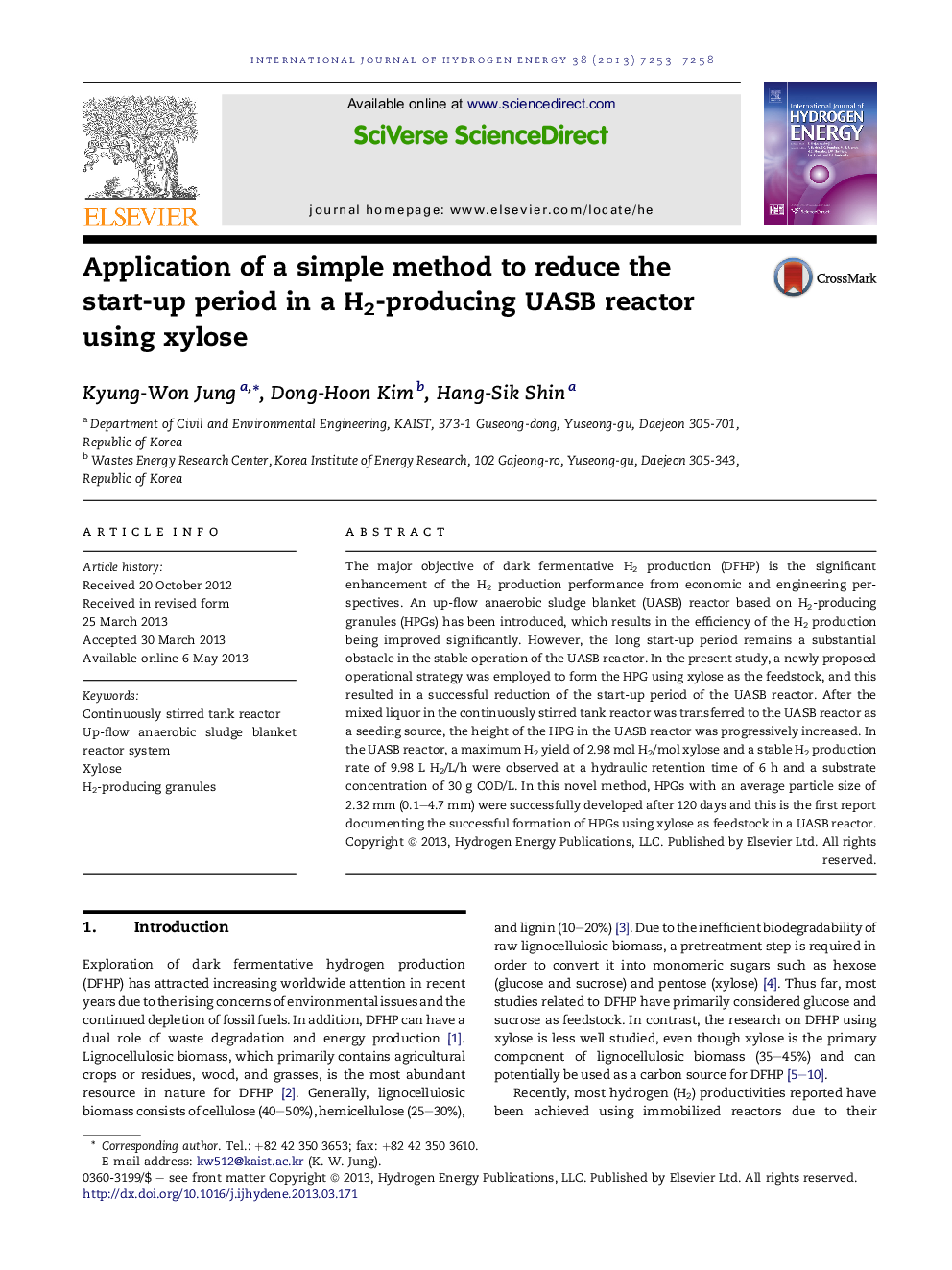| Article ID | Journal | Published Year | Pages | File Type |
|---|---|---|---|---|
| 7722966 | International Journal of Hydrogen Energy | 2013 | 6 Pages |
Abstract
The major objective of dark fermentative H2 production (DFHP) is the significant enhancement of the H2 production performance from economic and engineering perspectives. An up-flow anaerobic sludge blanket (UASB) reactor based on H2-producing granules (HPGs) has been introduced, which results in the efficiency of the H2 production being improved significantly. However, the long start-up period remains a substantial obstacle in the stable operation of the UASB reactor. In the present study, a newly proposed operational strategy was employed to form the HPG using xylose as the feedstock, and this resulted in a successful reduction of the start-up period of the UASB reactor. After the mixed liquor in the continuously stirred tank reactor was transferred to the UASB reactor as a seeding source, the height of the HPG in the UASB reactor was progressively increased. In the UASB reactor, a maximum H2 yield of 2.98 mol H2/mol xylose and a stable H2 production rate of 9.98 L H2/L/h were observed at a hydraulic retention time of 6 h and a substrate concentration of 30 g COD/L. In this novel method, HPGs with an average particle size of 2.32 mm (0.1-4.7 mm) were successfully developed after 120 days and this is the first report documenting the successful formation of HPGs using xylose as feedstock in a UASB reactor.
Related Topics
Physical Sciences and Engineering
Chemistry
Electrochemistry
Authors
Kyung-Won Jung, Dong-Hoon Kim, Hang-Sik Shin,
